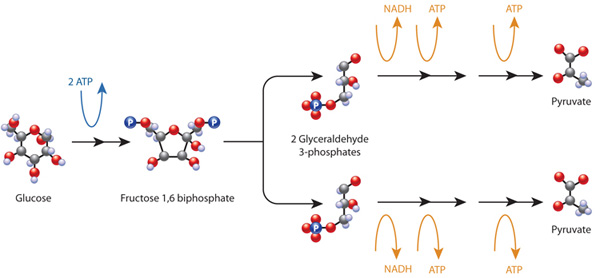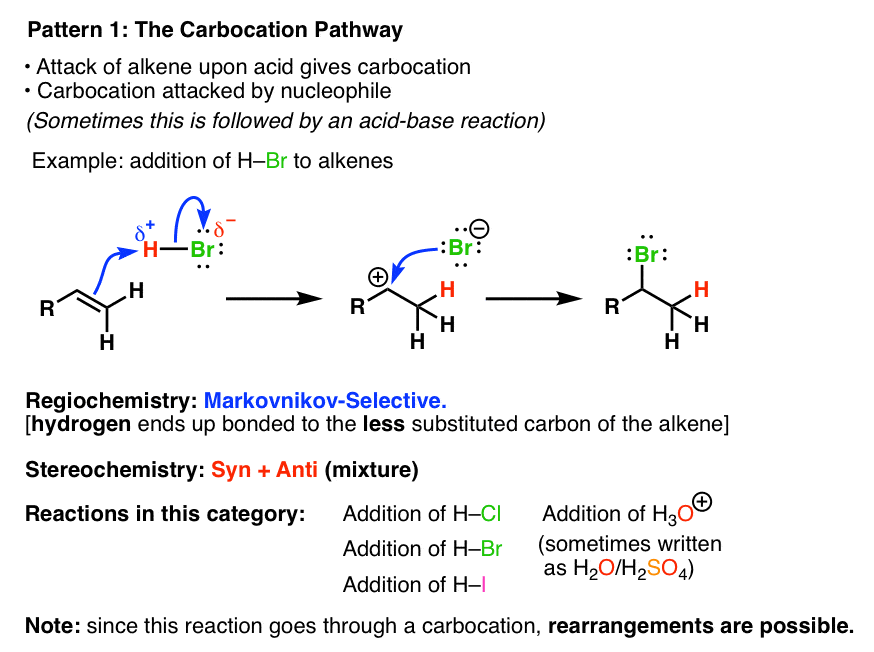What Are the Major Differences in the Two Reaction Pathways
The difference in reaction pathway between compounds with different linkages was believed to result from thermodynamics of the radical initiationmore The computational findings were consistent with the experiment results further supporting the different pyrolysis mechanisms for the beta-ether linked and alpha-ether linked compounds. Difference between SN1 and SN2.

Difference Between Sn1 And Sn2 Reactions Infographic Organic Chemistry Organic Chemistry Study Study Chemistry
The main difference between glycogenolysis and gluconeogenesis is that glycogenolysis is the production of glucose 6-phosphate by splitting a glucose monomer from glycogen by adding an inorganic phosphate whereas gluconeogenesis is the metabolic process by which glucose is formed from non-carbohydrate precursors in the liver.

. The first stage is pain sensitivity followed by the second stage where the signals are transmitted from the periphery to the dorsal horn DH which is located in the spinal cord via the peripheral nervous system PNS. Based on the first product formed during carbon fixation there are two pathways. There is no partial bond formed with the carbon during this reaction.
This reflex is produced when we stimulate third fourth and fifth lumbar nerves. Rates of intra-cellular reactions can be measured by extra-cellular product accumulation. Pentose Phosphate Pathway 3.
The attention weight matrices and the fragments with the highest attention values of two example reactions are visualized in Fig. The sensory component sensory neuron of the pathway has its receptors on muscles and motor component motor neuron is present in the spinal cord. The breaking down of molecules to obtain energy is catabolism and the building of new molecules needed by living systems is anabolism.
Shonnard Michigan Technological University 32 Analysis of E. Only two neurons are involved in this pathway. C enzyme reactions depend on the concentration of the enzyme and its recycling.
Key Areas Covered 1. The following points highlight the five major pathways in organisms. So overall reaction rate will be taken equal to the rate of RDS.
The S N 2 Reaction Notes. Here we have a reaction coordinate for two separate reactions shown on the same figure. The major difference between photolysis at 260 and 390 nm is that in the first case Ru3CO10mu-CO is formed by bimolecular recombination of Ru3CO10 with a free CO in 50 ns whereas in the second case it forms directly from Ru3CO12 at the onset of the reaction.
Knee jerk reflex is a classic example of this pathway. The rate of reaction is unimolecular. In general metabolic reactions are divided into two classes.
Complete the following reaction pathways by filling in any missing reagents intermediate compounds or products. Different Fermentation pathway of bacteria. It is only a one-step mechanism.
Carbocation is formed as an intermediate part of the reaction. Catabolic pathways involve the breakdown of molecules to release energy eg through cellular. In addition seven reactions are common for both glycolysis and gluconeogenesis.
The difference between two mean values was analyzed by Students t-test and was considered as statistically significant in case of P 005 and highly significant for P 0001. So you may feel OK one day such as when surrounded by friends and family but then the next day youre right back where you started because it was your loved ones birthday or perhaps you attended a wedding and it brought. The first statement suggests that the Redpath is faster than the blue path.
For example pyruvate is the main entry point of gluconeogenesis whereas in glycolysis it is the primary product. Tricarboxylic Acid Cycle 5. National Library of Medicine 01 Jan.
The differences between the photofragmentation pathways are related to the. The main difference here is that most forms of grief tend to decrease over time coming on in waves triggered by reminders of a loved one. 10 The main difference between chemical and enzyme kinetics is that A enzyme reactions are altered by pH.
Glycolysis Is an Energy-Conversion Pathway in Many Organisms Biochemistry. The AE that undergoes a change during the reaction has the. So the total time of the composite reaction will almost be equal to first step T totalT1 while T2 is neglected.
This back-side attack causes an inversion study the previous slide. The first-order neurons have their cell bodies in the dorsal root ganglia each with one process that contributes to a peripheral nerve and another that enters the spinal cord. Metabolism of pyruvate to produce ethanol occurs in two steps.
Br он Br 2 он Br SH OH 3 OH Br 4 U- ty- イース. Say T11sec for 1st step. Hint 1 2 4 5 - We have two methods for converting alcohols into alkyl halides.
Metabolic Pathway 1. We have the Redpath and we have the blue path. And T200000000001 sec reaction.
RESULTS Opposite Expression Pattern of uhrf1and uhrf2During Differentiation. Note Any chemical compound. No carbocation is formed during the reaction.
The main difference between the two pathways is the location of the second neuron which in turn determines where each pathway crosses the midline. What is the main difference between these two methods. In this pathway first glucose is converted into Pyruvate by glycolysis.
The rate of reaction is bimolecular. Basically the first step is called Rate dertermining step RDS. Pyruvate is first decarboxylated into Acetaldehyde and CO2.
The C3 pathway and C4 pathway. This is called a back-side attack. The Pathway of Photosynthesis C3 Pathway Calvin Cycle The majority of plants produce 3-carbon acid called 3-phosphoglyceric acid PGA as a first product during carbon dioxide fixation.
After the leaving group leaves the other substituents shift to make room for the newly-bonded nucleophile changing the stereochemistry of the molecule. It would only be faster if the activation energy for the Redpath were less than that of the blue path. D the rate constant for the formation of products is k2.
-CO2 H2O Sugars O2 - Sugars O2 CO2 H2O -needs the energy coming from light - Acquire energy from chemical reaction alone -organisms of which are self sustaining -. In the SN2 reaction the nucleophile attacks from the most δ region. The redox balance balance on NADH consumption and generation must balance.
Two major classes of metabolic reactions Catabolic pathways Break larger molecules into smaller products Exergonic release energy Anabolic pathways Synthesize large molecules from the smaller products of catabolism Endergonic require more energy than they release Oxidation and Reduction Reactions. It is a two-step mechanism. And then alcohol dehydrogenase reduces the pyruvate into ethanol and CO2.
Behind the leaving group. Difference between glycolysis and gluconeogenesis. OH 5 Br.
B enzyme reactions depend on the concentration of the substrate. The main difference between glycolysis and gluconeogenesis is their types of metabolism in the body. Coli Mixed Acid Fermentation Metabolic Engineering.
The two pathways also have a number of other molecules in common. Enzymes in chemical reactions have the power to break down build up or stop a chemical reaction. Hint 3 - HS is a strong nucleophile.
Lastly the third stage is to perform the transmission of the signals to the higher brain via the central nervous system CNS.

Cell Metabolism Learn Science At Scitable


No comments for "What Are the Major Differences in the Two Reaction Pathways"
Post a Comment